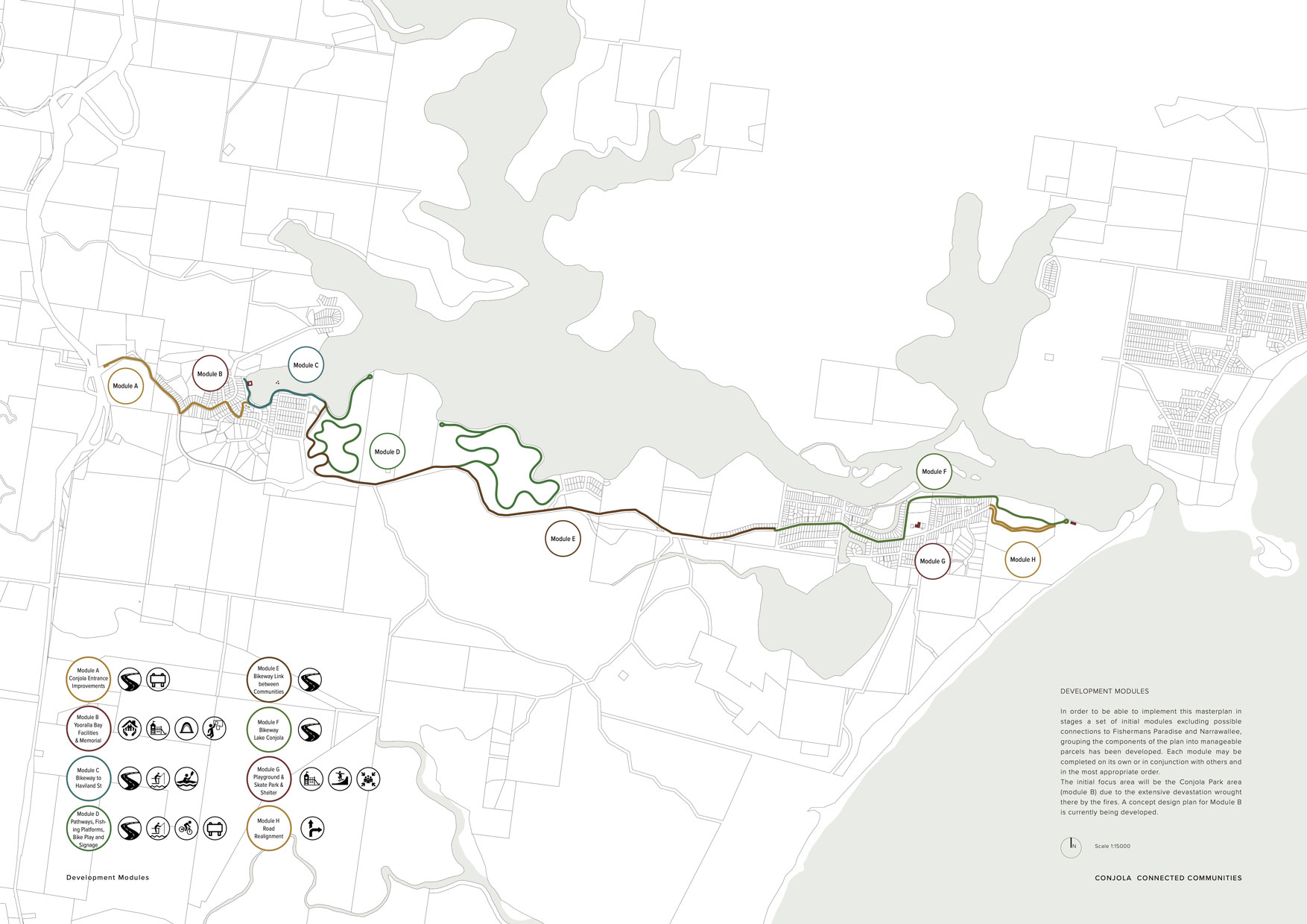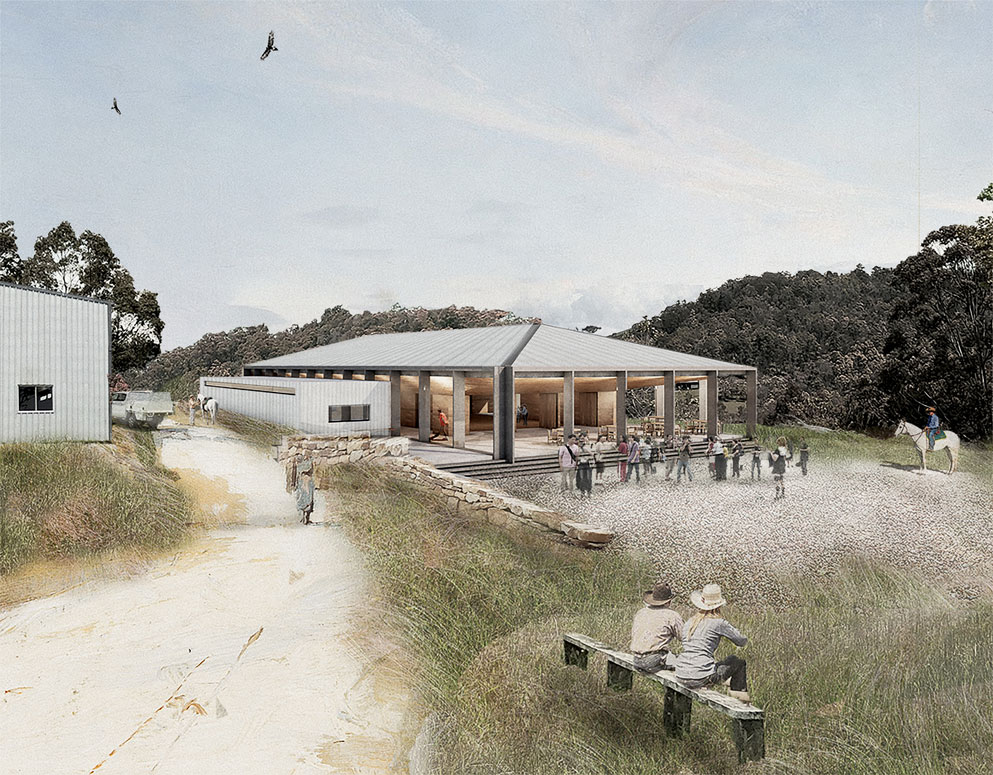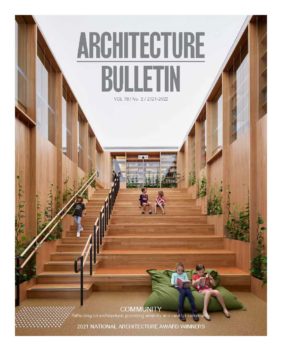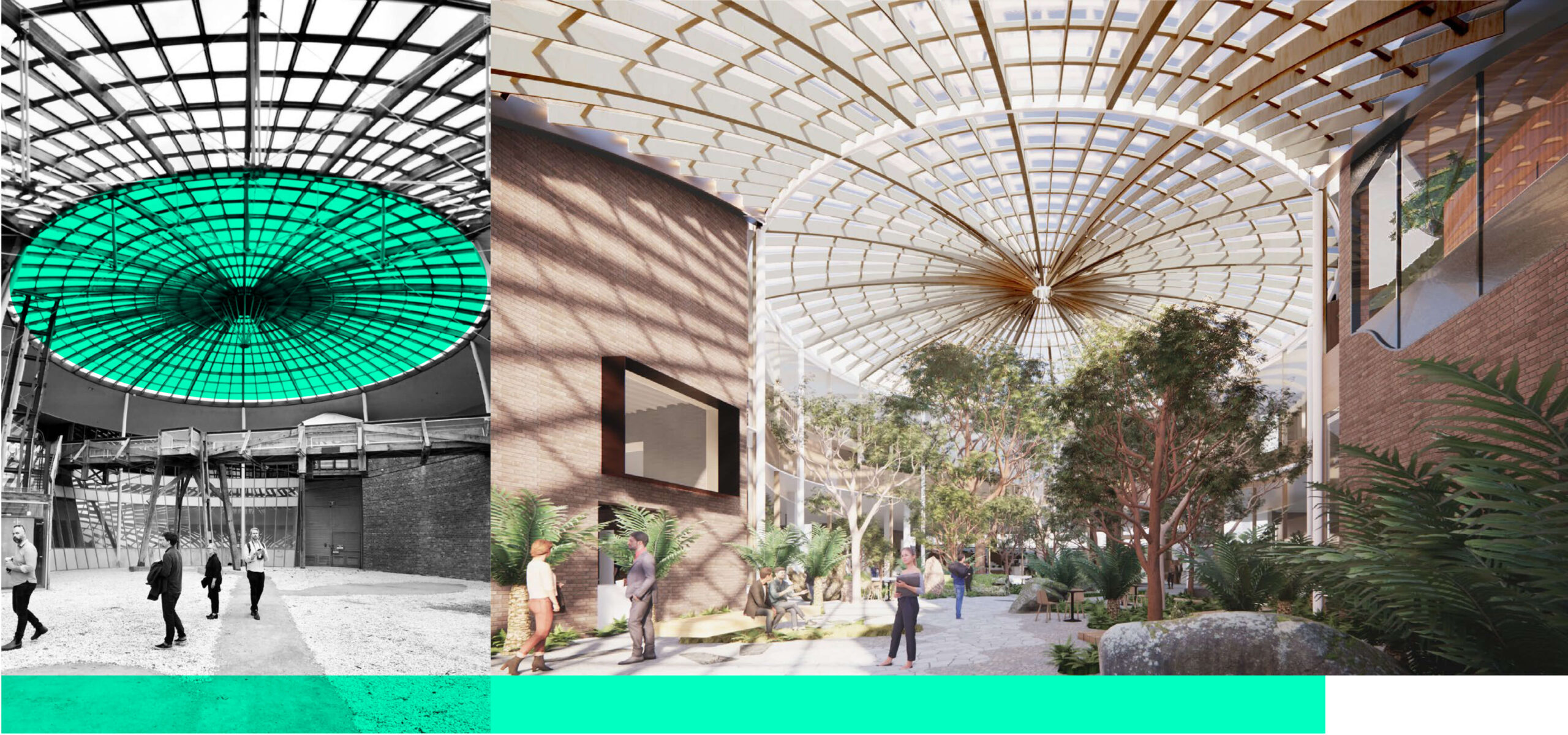Reframing a disaster: Rebuilding community on the NSW south coast
KATHARINA HENDEL AND BRENT DUNN



Personal connections to the south coast, coupled with an overwhelming desire to help where possible, our studio has been involved in a number of community recovery projects.
CONJOLA
In Lake Conjola, where we originally started Takt and had family who experienced the worst of the 2020 New Year’s Eve fires, we worked alongside the Recovery Committee, an association formed in the immediate aftermath of the fires to provide assistance to the community. While donations were distributed, funds raised and red tape hurdled, ideas also blossomed of how to transform the disaster into a rebuild program that would not only help the community move forward from the tragedy, but also improve resilience going forward.
As architects our skills were best suited to assist in filtering a myriad of seemingly random ideas into a more focused plan with room to develop and grow. The result is a masterplan, or vision document, that allows the community to fill in pieces over time.
The project process was a significant learning experience, as the project struggled through leadership changes, political challenges, some vocal community opposition to the “fancy or architect-y” despite our attempts to tread carefully and gently. Significantly evident was a sense of communal fatigue.
The brief window of time when goodwill, donations and grants are available is sometimes not the right time for the community. Yet, some pieces have been funded and we remain hopeful that as time passes, new leaders may emerge to take these ideas further.
COBARGO
Building on our work in Conjola, early tentative steps to establish a south coast office were accelerated when The Cobargo Folk Club & The Cobargo Showground Land Manager contacted us to assist with their visionary plans for a community hall. As the centre of operations for the initial bushfire recovery, the existing facilities at the Cobargo showground operated to support the recovery effort.
A new community building, on this relatively safe land, could double as a disaster refuge, not just for future fires, but also to counter the threat of other climate change impacts. Dual purposing of the structure is a challenge but it acknowledges that layers of protection can be a feature of good architecture. Layers that, like clothing, can be pulled on or off in different situations to improve thermal comfort for community gatherings in increasingly variable climatic conditions.
This project has received partial funding and we continue to work with the community in obtaining additional funds to begin construction while exploring the project’s possible wider application with Resilience NSW and other government and legislative bodies.
While Conjola experienced devastation of its residential areas, Cobargo and surrounds lost homes together with a swathe of its Main Street heart to a dagger of unbelievably devastating fires. Reimagining this highly evident emptiness in town is critical in restoring a sense of centre to Cobargo and its surrounds.
While working on the community hall project, initial introductions to the Rebuild Cobargo Main Street project were made after the Bushfire Local Economic Recovery Fund (BLERF) grants were announced by the NSW Government. A number of client bodies – Cobargo Bushfire Resilience Centre, and the Cobargo Quaama Business Recovery Group with a number of public private partnerships with landowners were seeking assistance to develop the grant proposals.
Government funding deadlines were only weeks from announcement so the race was on. On top of the fatigue of the previous year, face-to-face community meetings were impacted by the pandemic, and the deadline to deliver the applications fell close to the anniversary of the fires, adding to the intensity of the process.
Australian Business Volunteers (ABV) provided much needed support for the many projects being designed and costed, and numerous other organisations such as Arup and TBH offered pro bono assistance. We could not have completed these project designs without the invaluable input from SJB. Fortunately for the community, this immense effort was worthwhile as the Main Street projects are now successfully funded.
Where typically architects operate with a clear mandate – a direct link to decision makers, with an expectation to lead, to drive a project forward while carefully stewarding the creative spark in the process to a built conclusion, in community projects the driving factor is not the architect – nor should it be. It is the community itself via its representatives.
While diverse in backgrounds and personalities, the leaders in these projects have all shown a similar determination, calm confidence, and ability to hear all sides and negotiate outcomes. They are translators of the vision to various subgroups, and are personally invested in a great outcome for the community.
Without this drive and passion, none of these projects could ever hope to develop to their fullest potential. They require leaders who understand their community, who can learn from its past, and who appreciate the breadth of the future challenges that are most certainly mounting.
By respecting and responding to the values of a community, adding weight and depth to their narrative from our own investigations, sometimes challenging assumptions, we become facilitators. The value architecture offers is the process of drawing out ideas, of revealing hidden significance and deepening understanding after careful listening and close observation. Knowing too, when to step back, to allow the community time and pause for reflection, to let the silt stirred to settle is important.
As committed regionalists we understand that while change in the built environment is inevitable, it should occur in a way that celebrates the uniqueness of each place, is considerate of the challenges that lie ahead, and caters for the diversity of community life.
Takt directors Katharina Hendel and Brent Dunn are active in the Small Practice Forum of the Australian Institute of Architects and are founding members of the Regional Architecture Association. Takt has been working with communities on the south coast of NSW, to assist with post bushfire recovery projects, including masterplanning in Lake Conjola, designing a multipurpose community hall / disaster refuge for the Cobargo Showground, and are continuing to work on the recently funded Rebuild Cobargo and Cobargo Bushfire Resilience Centre main street projects.




